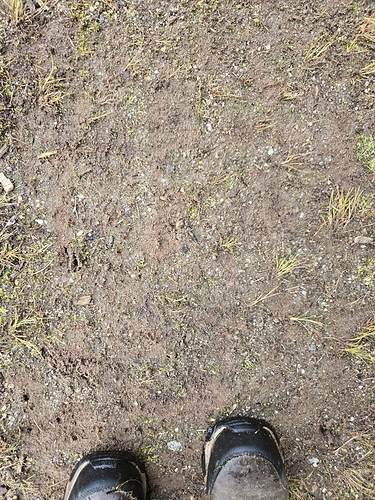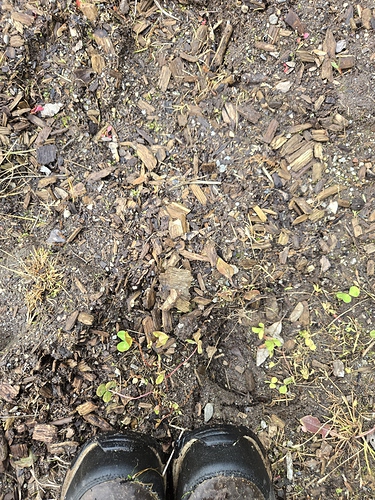I have the same sort of thing in front on my manure bins. Rocks (big 'uns, too big to dig out) always made getting into the middle bin a little unnerving, so I brought up level in front of all three with chips. They’ve matted down and compressed (or whatever lol) and turned into such a nice solid surface. Works great!
@B-burg_Dressage here are some pics. It wasn’t this wet when I started scraping stuff out…we’ve had rain since.
The layers.
This is what the intact top surface looks like.
This is an area with layer breakdown, and chips coming up.
Here are some of the chips that were beneath the sand.
And @Amberley my dude not a single person here denies that the absolute best way to handle this is to scrape it all out and start fresh. I’ll tell you what. Because you seem so emotionally invested in this, I would be perfectly happy to let you do that. You bankroll it, and do this the one true only way to do any arena. You can even berate me, tell me how stupid it is, tell me how wrong I am, tell me how what’s here can’t possibly work, tell me it’s not as old as I say, whatever. For the duration of one cold beer, or your libation of choice–which I’ll even provide! Seems like a win win. You get to be right, you get to call me stupid, and the arena will be 100% up to your exacting standards. For your planning purposes, it’s about 80x120, and a triaxle of rock from the quarry runs about a grand. Lmk!!






 Yeah, would love to get more of a cap over the whole thing! We’ll see how it goes.
Yeah, would love to get more of a cap over the whole thing! We’ll see how it goes. Works like one too, except it’s kinda springy. Which I never really understood! But sure do now haha.
Works like one too, except it’s kinda springy. Which I never really understood! But sure do now haha. Some people might think it’s crap, but boy, it worked well! The pine boards would be broken by a good kick, but the hemlock just got kicked out.
Some people might think it’s crap, but boy, it worked well! The pine boards would be broken by a good kick, but the hemlock just got kicked out.
 Cedar also refers to a member of the of juniper family (Red or Eastern Cedar, juniperus virginiana) and a western cousin, also a juniper. Very common in old fields in the east, it dies out in the shade
Cedar also refers to a member of the of juniper family (Red or Eastern Cedar, juniperus virginiana) and a western cousin, also a juniper. Very common in old fields in the east, it dies out in the shade